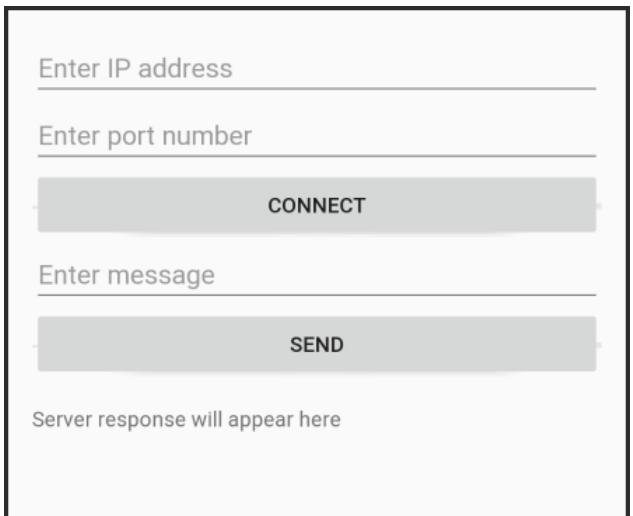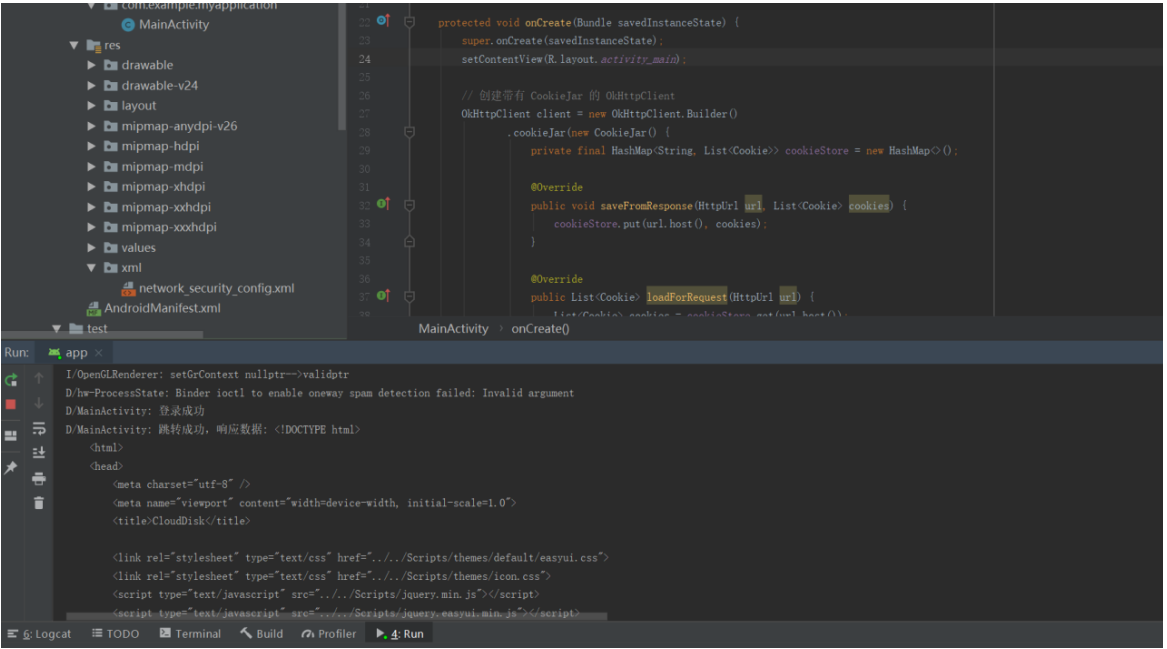文章的目的为了记录使用java 进行android app 开发学习的经历。本职为嵌入式软件开发,公司安排开发app,临时学习,完成app的开发。开发流程和要点有些记忆模糊,赶紧记录,防止忘记。
相关链接:
开源 java android app 开发(一)开发环境的搭建-优快云博客
开源 java android app 开发(二)工程文件结构-优快云博客
开源 java android app 开发(三)GUI界面布局和常用组件-优快云博客
开源 java android app 开发(四)GUI界面重要组件-优快云博客
开源 java android app 开发(五)文件和数据库存储-优快云博客
开源 java android app 开发(六)多媒体使用-优快云博客
开源 java android app 开发(七)通讯之Tcp和Http-优快云博客
开源 java android app 开发(八)通讯之Mqtt和Ble-优快云博客
开源 java android app 开发(九)后台之线程和服务-优快云博客
开源 java android app 开发(十)广播机制-优快云博客
开源 java android app 开发(十一)调试、发布-优快云博客
开源 java android app 开发(十二)封库.aar-优快云博客
开源 java android app 开发(十三)自定义绘图控件--游戏摇杆
开源 java android app 开发(十四)自定义绘图控件--波形图
开源 java android app 开发(十五)自定义绘图控件--仪表盘
开源 java android app 开发(十六)自定义绘图控件--圆环
推荐链接:
开源C# .net mvc 开发(一)WEB搭建_c#部署web程序-优快云博客
开源 C# .net mvc 开发(二)网站快速搭建_c#网站开发-优快云博客
开源 C# .net mvc 开发(三)WEB内外网访问(VS发布、IIS配置网站、花生壳外网穿刺访问)_c# mvc 域名下不可訪問內網,內網下可以訪問域名-优快云博客
开源 C# .net mvc 开发(四)工程结构、页面提交以及显示_c#工程结构-优快云博客
开源 C# .net mvc 开发(五)常用代码快速开发_c# mvc开发-优快云博客
本章节主要内容是安卓通讯协议的使用,应用多数和网络相关,只要下载数据或上传数据,就需要用到网络通讯。通讯的内容较多,这章主要是Tcp和Http。
本章内容如下:
1.Tcp协议通讯
2.Http协议通讯
一、Tcp协议通讯
代码实现了Tcp客户端对,Tcp服务器端的访问(网络调试助手)。可以配置访问的服务器端的IP和端口号,成功连接后,可以发送数据到服务器。
1.1 添加网络权限:在 AndroidManifest.xml 中添加网络权限
<uses-permission android:name="android.permission.INTERNET" />1.2 界面 activity_main.xml:
<?xml version="1.0" encoding="utf-8"?>
<LinearLayout xmlns:android="http://schemas.android.com/apk/res/android"
android:layout_width="match_parent"
android:layout_height="match_parent"
android:orientation="vertical"
android:padding="16dp">
<EditText
android:id="@+id/ipEditText"
android:layout_width="match_parent"
android:layout_height="wrap_content"
android:hint="Enter IP address" />
<EditText
android:id="@+id/portEditText"
android:layout_width="match_parent"
android:layout_height="wrap_content"
android:hint="Enter port number"
android:inputType="number" />
<Button
android:id="@+id/connectButton"
android:layout_width="match_parent"
android:layout_height="wrap_content"
android:text="Connect" />
<EditText
android:id="@+id/messageEditText"
android:layout_width="match_parent"
android:layout_height="wrap_content"
android:hint="Enter message" />
<Button
android:id="@+id/sendButton"
android:layout_width="match_parent"
android:layout_height="wrap_content"
android:text="Send" />
<TextView
android:id="@+id/responseTextView"
android:layout_width="match_parent"
android:layout_height="wrap_content"
android:text="Server response will appear here"
android:paddingTop="16dp" />
</LinearLayout>1.3 代码MainActivity.java
package com.example.socketclient;
import android.os.Bundle;
import android.os.Handler;
import android.os.Looper;
import android.view.View;
import android.widget.Button;
import android.widget.EditText;
import android.widget.TextView;
import androidx.appcompat.app.AppCompatActivity;
import java.io.BufferedReader;
import java.io.IOException;
import java.io.InputStreamReader;
import java.io.PrintWriter;
import java.net.Socket;
public class MainActivity extends AppCompatActivity {
private EditText ipEditText, portEditText, messageEditText;
private Button connectButton, sendButton;
private TextView responseTextView;
private Socket socket;
private PrintWriter out;
private BufferedReader in;
private Handler handler = new Handler(Looper.getMainLooper());
@Override
protected void onCreate(Bundle savedInstanceState) {
super.onCreate(savedInstanceState);
setContentView(R.layout.activity_main);
ipEditText = findViewById(R.id.ipEditText);
portEditText = findViewById(R.id.portEditText);
messageEditText = findViewById(R.id.messageEditText);
connectButton = findViewById(R.id.connectButton);
sendButton = findViewById(R.id.sendButton);
responseTextView = findViewById(R.id.responseTextView);
connectButton.setOnClickListener(new View.OnClickListener() {
@Override
public void onClick(View v) {
connectToServer();
}
});
sendButton.setOnClickListener(new View.OnClickListener() {
@Override
public void onClick(View v) {
sendMessage();
}
});
}
private void connectToServer() {
final String ip = ipEditText.getText().toString();
final int port = Integer.parseInt(portEditText.getText().toString());
new Thread(new Runnable() {
@Override
public void run() {
try {
socket = new Socket(ip, port);
out = new PrintWriter(socket.getOutputStream(), true);
in = new BufferedReader(new InputStreamReader(socket.getInputStream()));
handler.post(new Runnable() {
@Override
public void run() {
responseTextView.setText("Connected to server");
}
});
} catch (IOException e) {
e.printStackTrace();
handler.post(new Runnable() {
@Override
public void run() {
responseTextView.setText("Connection failed: " + e.getMessage());
}
});
}
}
}).start();
}
private void sendMessage() {
final String message = messageEditText.getText().toString();
new Thread(new Runnable() {
@Override
public void run() {
if (out != null) {
out.println(message);
try {
final String response = in.readLine();
handler.post(new Runnable() {
@Override
public void run() {
responseTextView.setText("Server response: " + response);
}
});
} catch (IOException e) {
e.printStackTrace();
handler.post(new Runnable() {
@Override
public void run() {
responseTextView.setText("Error receiving response: " + e.getMessage());
}
});
}
} else {
handler.post(new Runnable() {
@Override
public void run() {
responseTextView.setText("Not connected to server");
}
});
}
}
}).start();
}
@Override
protected void onDestroy() {
super.onDestroy();
try {
if (socket != null) {
socket.close();
}
} catch (IOException e) {
e.printStackTrace();
}
}
}1.4 显示效果如下图

二、 Http访问,以下代码实现对网站的Http访问,访问中输入了用户名和密码。成功后保存cookie并跳转到指定网页。页面将打印在控制台中。
2.1 添加网络权限:在 AndroidManifest.xml 中添加网络权限。
<uses-permission android:name="android.permission.INTERNET" />2.2 使用 HTTP 客户端:Android 推荐使用 OkHttp 或 HttpURLConnection 来发送 HTTP 请求。在src文件夹的build.gradle文件中添加以下代码
dependencies {
implementation 'com.squareup.okhttp3:okhttp:4.9.3'
}2.3 界面 activity_main.xml:
<?xml version="1.0" encoding="utf-8"?>
<LinearLayout xmlns:android="http://schemas.android.com/apk/res/android"
android:layout_width="match_parent"
android:layout_height="match_parent"
android:orientation="vertical"
android:padding="16dp"
android:gravity="center">
<EditText
android:id="@+id/test"
android:layout_width="match_parent"
android:layout_height="wrap_content"
android:hint="用户名"
android:inputType="text"/>
<EditText
android:id="@+id/etPassword"
android:layout_width="match_parent"
android:layout_height="wrap_content"
android:hint="密码"
android:inputType="textPassword"
android:layout_marginTop="8dp"/>
<Button
android:id="@+id/btnLogin"
android:layout_width="match_parent"
android:layout_height="wrap_content"
android:text="登录并保存Cookie"
android:layout_marginTop="16dp"/>
<Button
android:id="@+id/btnAccessPage"
android:layout_width="match_parent"
android:layout_height="wrap_content"
android:text="使用Cookie访问其他页面"
android:layout_marginTop="8dp"/>
<ScrollView
android:layout_width="match_parent"
android:layout_height="match_parent">
<LinearLayout
android:layout_width="match_parent"
android:layout_height="wrap_content"
android:orientation="vertical" >
<TextView
android:id="@+id/tvResult"
android:layout_width="match_parent"
android:layout_height="wrap_content"
android:layout_marginTop="16dp"
android:textSize="16sp" />
</LinearLayout>
</ScrollView>
</LinearLayout>2.4 MainActivity.java
package com.example.myapplication;
import android.content.SharedPreferences;
import android.os.AsyncTask;
import android.os.Bundle;
import android.view.View;
import android.widget.Button;
import android.widget.EditText;
import android.widget.TextView;
import android.widget.Toast;
import androidx.appcompat.app.AppCompatActivity;
import java.io.BufferedReader;
import java.io.IOException;
import java.io.InputStream;
import java.io.InputStreamReader;
import java.net.HttpCookie;
import java.net.HttpURLConnection;
import java.net.URL;
import java.util.List;
import java.util.Map;
public class MainActivity extends AppCompatActivity {
private EditText etUsername, etPassword;
private Button btnLogin, btnAccessPage;
private TextView tvResult;
// 替换为你的实际登录URL和其他页面URL
private static final String LOGIN_URL = "http://XXX/";
private static final String OTHER_PAGE_URL = "http://XXX/Index";
private SharedPreferences sharedPreferences;
@Override
protected void onCreate(Bundle savedInstanceState) {
super.onCreate(savedInstanceState);
setContentView(R.layout.activity_main);
etUsername = findViewById(R.id.test);
etPassword = findViewById(R.id.etPassword);
btnLogin = findViewById(R.id.btnLogin);
btnAccessPage = findViewById(R.id.btnAccessPage);
tvResult = findViewById(R.id.tvResult);
sharedPreferences = getSharedPreferences("MyAppPrefs", MODE_PRIVATE);
btnLogin.setOnClickListener(v -> {
String username = etUsername.getText().toString();
String password = etPassword.getText().toString();
if (username.isEmpty() || password.isEmpty()) {
Toast.makeText(this, "请输入用户名和密码", Toast.LENGTH_SHORT).show();
return;
}
new LoginTask().execute(username, password);
});
btnAccessPage.setOnClickListener(v -> {
if (!sharedPreferences.contains("cookie")) {
Toast.makeText(this, "请先登录获取Cookie", Toast.LENGTH_SHORT).show();
return;
}
new AccessPageTask().execute();
});
}
private class LoginTask extends AsyncTask<String, Void, String> {
private String cookie;
@Override
protected String doInBackground(String... params) {
String username = params[0];
String password = params[1];
try {
URL url = new URL(LOGIN_URL);
HttpURLConnection connection = (HttpURLConnection) url.openConnection();
connection.setRequestMethod("POST");
connection.setDoOutput(true);
// 构建POST数据 (根据实际网站修改)
String postData = "inputEmail3=" + username + "&inputPassword3=" + password;
connection.getOutputStream().write(postData.getBytes());
// 获取Cookie
Map<String, List<String>> headerFields = connection.getHeaderFields();
List<String> cookiesHeader = headerFields.get("Set-Cookie");
if (cookiesHeader != null) {
for (String cookie : cookiesHeader) {
// 简单的Cookie处理,实际情况可能需要更复杂的解析
this.cookie = cookie.split(";")[0];
break;
}
}
// 读取响应
InputStream inputStream = connection.getInputStream();
BufferedReader reader = new BufferedReader(new InputStreamReader(inputStream));
StringBuilder response = new StringBuilder();
String line;
while ((line = reader.readLine()) != null) {
response.append(line);
}
return response.toString();
} catch (IOException e) {
e.printStackTrace();
return "登录失败: " + e.getMessage();
}
}
@Override
protected void onPostExecute(String result) {
if (cookie != null && !cookie.isEmpty()) {
// 保存Cookie到SharedPreferences
SharedPreferences.Editor editor = sharedPreferences.edit();
editor.putString("cookie", cookie);
editor.apply();
tvResult.setText("登录成功! Cookie已保存\n响应: " + result);
} else {
tvResult.setText("登录失败,未获取到Cookie\n响应: " + result);
}
}
}
private class AccessPageTask extends AsyncTask<Void, Void, String> {
@Override
protected String doInBackground(Void... voids) {
String savedCookie = sharedPreferences.getString("cookie", "");
try {
URL url = new URL(OTHER_PAGE_URL);
HttpURLConnection connection = (HttpURLConnection) url.openConnection();
connection.setRequestMethod("GET");
// 设置保存的Cookie
connection.setRequestProperty("Cookie", savedCookie);
// 读取响应
InputStream inputStream = connection.getInputStream();
BufferedReader reader = new BufferedReader(new InputStreamReader(inputStream));
StringBuilder response = new StringBuilder();
String line;
while ((line = reader.readLine()) != null) {
response.append(line);
}
return response.toString();
} catch (IOException e) {
e.printStackTrace();
return "访问页面失败: " + e.getMessage();
}
}
@Override
protected void onPostExecute(String result) {
tvResult.setText("使用Cookie访问页面结果:\n" + result);
}
}
}2.5 调试时报错MainActivity: 登录请求失败: CLEARTEXT communication to XXX.com not permitted by network security policy
在Android开发中,如果你遇到“CLEARTEXT communication to [host] not permitted by network security policy”错误,这意味着你的应用尝试使用HTTP(而不是HTTPS)与服务器通信,而Android的网络安全性配置默认不允许明文(HTTP)通信。
如果你暂时无法使用HTTPS,可以通过修改应用的网络安全配置来允许明文通信。不过,这种方法不推荐用于生产环境,因为它会降低应用的安全性。
在res/xml目录下创建一个network_security_config.xml文件,内容如下:
<?xml version="1.0" encoding="utf-8"?>
<network-security-config>
<domain-config cleartextTrafficPermitted="true">
<domain includeSubdomains="true">40977f53b4.qicp.vip</domain>
</domain-config>
</network-security-config>然后在AndroidManifest.xml文件中引用这个配置文件:
<application
android:networkSecurityConfig="@xml/network_security_config"
... >
...
</application>2.6 调试结果,登录成功并跳转。控制台打印2个页面,第1个是登录页面,第2个是目标页面。























 969
969

 被折叠的 条评论
为什么被折叠?
被折叠的 条评论
为什么被折叠?








